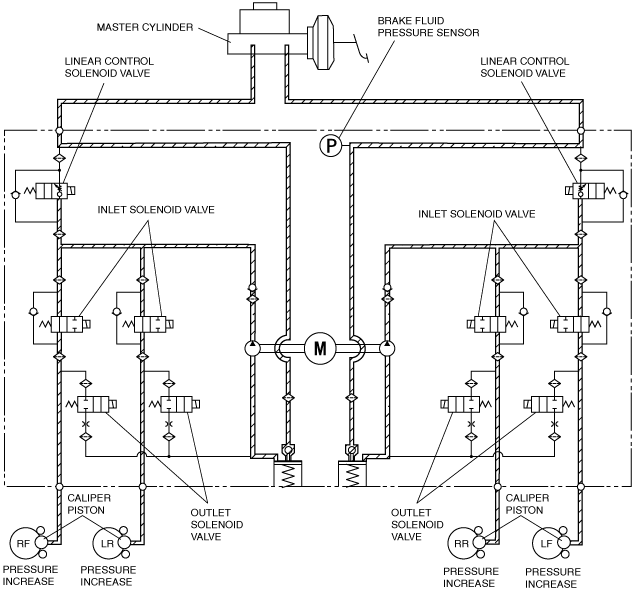• Operation conditions (any of the following conditions must be met):
-
― The selector lever is in the P position. (ATX)
― The parking brake is applied.
― The brake pedal is depressed.
• When any of the operation conditions is met and the SAS control module detects a collision with another vehicle, it outputs a brake control (SCR brake) request signal (3) to the DSC HU/CM. (At the same time, it also outputs a hazard warning (SCR hazard) request signal to the Front Body Control Module (FBCM)).
• The DSC HU/CM energizes the linear control solenoid valve to switch the hydraulic circuits, and at the same time, it operates the pump motor to activate the pump so that the brake fluid pressure is lead to the caliper piston and the automatic brakes are operated (4). At the same time, the DSC HU/CM outputs a brake light signal to the Rear Body Control module (RBCM) (5).
• While the brake control (SCR brake) is operating, turns on the brake lights automatically (6), and at the same time the brake lighe unit outputs a brake light operation signal to the DSC HU/CM (7).
• Cancel condition (any of the following conditions must be met):
-
― The engine is stopped (the ignition is switched off).
― Approx. 1.5 s has elapsed since the vehicle was stopped by the brake control (SCR brake).
― The accelerator pedal opening angle exceeds approx. 20%.
― Brake force greater than that generated by the brake control (SCR brake) is input via the brake pedal.
